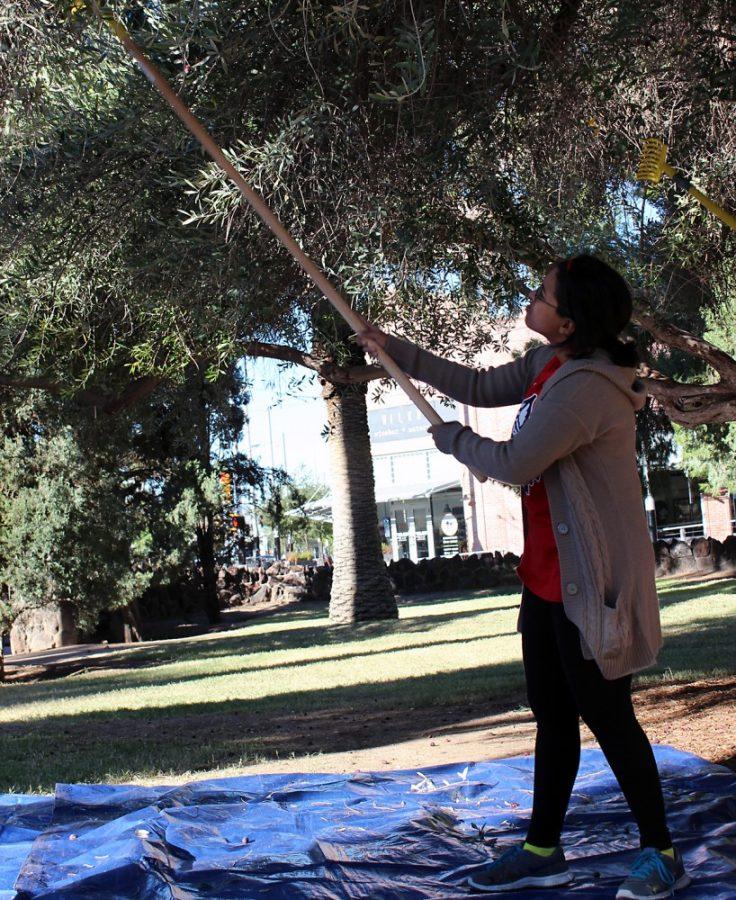Student and community volunteers spent Veterans Day harvesting olives on campus to be made into olive oil.
Volunteers lined the sidewalk near Park Avenue and University Boulevard using rakes and standing on ladders to glean olives from the trees. Others were on the ground collecting olives from a tarp and separating them from their leaves into a bucket.
Funded by the UA Green Fund, Linking Edible Arizona Forests is working to harvest many of the olive trees on campus. Angela Knerl, a co-olive coordinator for the LEAF Project, said they asked Facilities Management not to spray chemicals on certain trees so they can be harvested. The chemical prevents trees from blooming and making fruit, which keeps the sidewalk clear of olives that passersby might step on, according to Knerl.
Many of the olives from the 27 trees being harvested are Mission Olives and European Olives, Knerl said.
Melanie Lenart, an adjunct professor with the Department of Soil, Water and Environmental Science and the project manager of the LEAF Project, said 60 percent of the olives should be black and ripe, while 40 percent should be green in order to make olive oil.
“That was another trick in trying to plan the timing of the harvest,” Lenart said. “It’s just, are the trees ready?”
Once the olives are harvested from the trees, they will be sent to Queen Creek Olive Mill to eventually be made into olive oil available next year. Harvesters were provided with supplies from various groups on campus.
UA Dining Services provided 30 buckets to collect the olives, Facilities Management provided 11 ladders and the Iskashitaa Refugee Network provided some of the rakes.
This is the first time the university has harvested olives systematically, according to Lenart. She added that they would like to use any money they raise from the oil to go toward helping the project.
“We’re trying to find a way to support the olive harvest in the longer term without having to go to the Green Fund for every penny,” Lenart said.
LEAF hopes to do another harvest next year and has put in a proposal with the Green Fund, Lenart said.
Dining Services provided volunteers with lunch which included gluten-free olive bread from a local vendor.
Lenart said the olive harvesting project can serve as a reminder that local and natural food is still available to people.
“I think its gotten to the point where technology has made us feel so distant from the natural world,” Lenart said. “It’s a good reminder that ‘Look, I can pick this food that’s growing on trees.’”
Project members visited classes informing students about the project, as well as tabled on the Mall during UA Food Day.
Diana Englert, a regional development sophomore, said she found out about the olive harvesting from UA Food Day.
“I thought it was a really interesting program” Englert said. “We have these trees on campus and it doesn’t seem like we do anything with them.”
Englert said she didn’t even know the fruits on the ground were olives before learning about the project.
“I guess it makes you more aware about what’s going on on campus.” Englert said. “There’s more than just going to class, there are programs we can get involved with.”
– Follow Maggie Driver @Maggie_Driver









